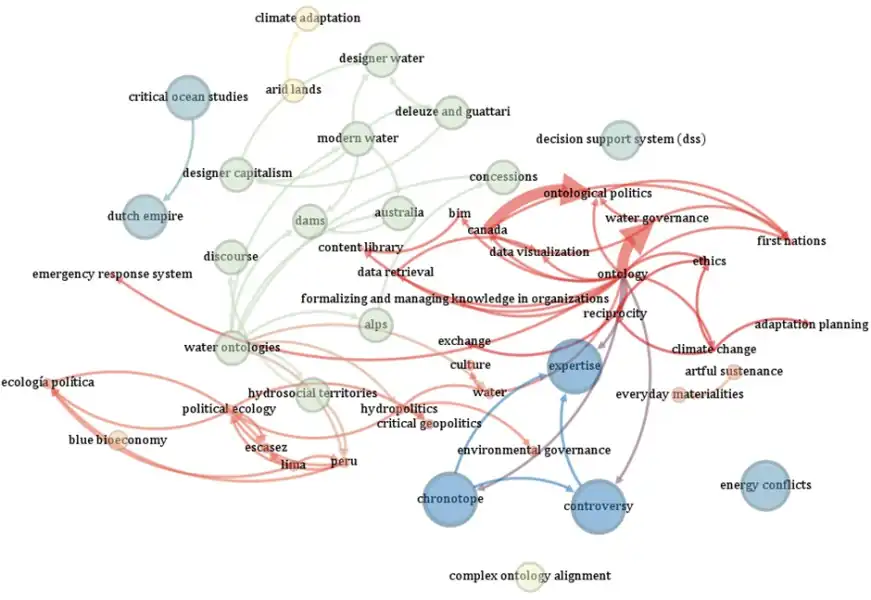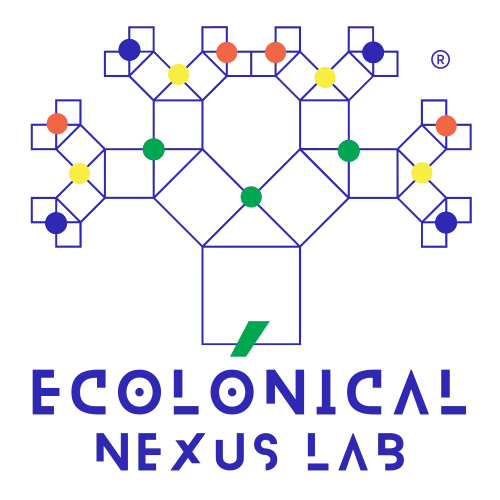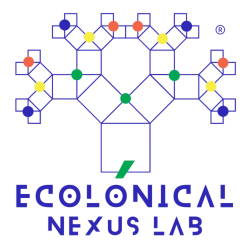No products in the cart.

AI and Water Ontologies
Contents
I. Abstract
In exploring the dynamic interplay between artificial intelligence (AI) and water ontologies, this article delves into how AI contributes to the structuring and synthesis of water-related information. Central to this discourse is the pivotal role of water ontologies in streamlining data management and bolstering decision-making processes. The study’s core aim is to illuminate the transformative impact of AI and data science in refining water ontologies, a process encompassing data integration, sophisticated knowledge representation, and the development of nuanced ontologies.
The research methodology employed is an exhaustive review and analytical assessment of peer-reviewed scholarly articles, with an emphasis on both quantitative and qualitative research methodologies pertaining to water ontologies. A key outcome of this analysis is the recognition of AI and data science’s capability to substantially augment water resource management, elevate the precision of water quality monitoring, and buttress decision-making processes that are sustainable and informed. Furthermore, this paper explores the broader implications of these technological advancements on a spectrum of stakeholders, including but not limited to researchers, policy architects, and professionals in the realm of water management.
“By delving into the realm of water ontologies, we are referring to the complex and varied ways through which societies conceptualize, interact with, and govern water resources, influenced by cultural, environmental, and socio-political factors. The study aims to shed light on how AI, through its capabilities in data integration, sophisticated algorithmic analyses, and predictive modeling, is revolutionizing our understanding and management of water resources, thus contributing significantly to the domain of water ontologies.”
II. INTRODUCTION
Water is an indispensable resource essential for life, ecosystems, and human civilizations. Effective management and conservation of water resources necessitate precise and efficient methodologies for data collection, analysis, and interpretation. In this context, water ontologies emerge as structured frameworks designed to organize and integrate diverse water-related data. These ontologies enhance semantic interoperability among different data types, facilitating knowledge exchange and collaborative efforts among various stakeholders in the water domain.
This article delves into the synergy between artificial intelligence (AI), data science, and statistics with water ontologies. Through a comprehensive review of existing literature and empirical research, the study seeks to illuminate the technological advancements and potentials of AI and data science in revolutionizing water resource management. The overarching aim is to underscore how these technological interventions address complex water-related challenges and aid in the formulation of informed, evidence-based decisions for sustainable water governance.
III. LITERATURE REVIEW
A. Water Ontologies: Concepts and Challenges
Water ontologies represent a critical aspect of environmental informatics, aiming to systematically capture and organize the vast and varied knowledge associated with water resources. They employ a structured approach to create a unified vocabulary and framework for water-related data, which is instrumental in supporting semantic interoperability and effective communication among stakeholders. By defining and linking entities, properties, and relationships within the water domain, ontologies facilitate a more nuanced understanding and efficient management of water resources.
These ontological structures typically adopt hierarchical or network-based formats, forming comprehensive taxonomies or ontology graphs that reflect the intricate nature of water-related concepts. However, the development of robust and functional water ontologies faces several challenges. Data heterogeneity, resulting from the diverse sources and formats of water-related data, poses a significant challenge. This variability necessitates sophisticated methods for data harmonization and integration, ensuring that the ontology accurately reflects the multifaceted nature of water data. Additionally, maintaining the ontology’s relevance and adaptability in the face of evolving knowledge and environmental changes requires ongoing refinement and expansion, often leveraging advancements in AI, data science, and statistical methodologies.
B. AI and Water Ontologies
AI has emerged as a powerful tool in enhancing the capabilities of water ontologies. Machine learning algorithms, a subset of AI, are particularly valuable in automating the development of ontologies. By analyzing extensive datasets, these algorithms can identify and categorize key water-related concepts and relationships. This automated approach to ontology development accelerates the process and potentially uncovers novel insights that might be overlooked in manual curation.
Natural Language Processing (NLP), another branch of AI, facilitates the incorporation of unstructured textual data into water ontologies. By analyzing documents such as research articles, reports, and policy documents, NLP techniques can extract pertinent information and integrate it into the ontology, thereby enriching it with a broader spectrum of knowledge. Knowledge representation and reasoning, integral parts of AI, provide formalized methods for defining the semantics of water ontology concepts. These methods allow for the development of sophisticated models that can reason about water data and support automated decision-making, enhancing the utility of water ontologies in practical applications.
Despite these advantages, the application of AI in water ontologies is not without challenges. The need for extensive, representative, and high-quality datasets for training AI models is a significant hurdle. Additionally, the potential for biases in AI algorithms necessitates careful consideration and mitigation strategies to ensure that the ontologies remain objective and reliable. Successful examples of AI in water ontologies include ontology-based expert systems for water management, automated water quality classification models, and systems for extracting environmental impact information from textual sources.
C. Data Science Approaches for Water Ontologies
Data science methodologies significantly contribute to the development and refinement of water ontologies. One of the primary roles of data science in this context is data integration. Given the diverse sources and formats of water-related data, integrating this information into a cohesive and structured ontology is paramount. Techniques such as data harmonization, transformation, and linking are employed to ensure that the ontology provides a comprehensive and accurate representation of water data.
Data mining techniques, including clustering, classification, and association rule mining, are applied to discover patterns, relationships, and dependencies within the water data captured by the ontology. These insights can guide further development of the ontology and enhance its applicability in various water resource management scenarios. Data visualization plays a crucial role in making the complex data within water ontologies accessible and understandable. Visualization tools and techniques, such as interactive graphs, charts, and maps, allow users to explore and interpret the data, facilitating more informed decision-making and hypothesis generation.
Furthermore, data quality assessment is a critical aspect of ontology development. Data scientists employ various techniques to identify and rectify data inconsistencies, errors, and outliers, ensuring the reliability and credibility of the ontology. This ongoing process of quality assurance is vital for maintaining the integrity and utility of the water ontology over time.
D. Statistical Analysis of Water Ontologies
Statistical methods provide a quantitative foundation for analyzing and interpreting the data encapsulated in water ontologies. Descriptive statistics offer a summary view of the water concepts and attributes, revealing their central tendencies, variability, and distribution. This baseline understanding is crucial for any further analysis and application of the ontology data.
Hypothesis testing allows for rigorous examination of the relationships and differences between various water ontology concepts. By formulating and testing hypotheses based on sample data, researchers can draw statistically significant conclusions and inferences. Correlation and regression analyses reveal the nature and strength of associations between different variables within the water domain. These analyses are instrumental in understanding the underlying causal mechanisms and predicting future trends based on historical data.
Predictive modeling techniques, including time series analysis and regression models, are particularly valuable in forecasting future scenarios based on historical patterns and trends captured in the water ontology. These predictions can inform resource planning, risk assessment, and policy-making, providing a proactive approach to water management. Lastly, statistical evaluation techniques are employed to assess the validity and reliability of the ontology and its alignment with empirical observations. This assessment ensures that the ontology not only represents theoretical knowledge but also accurately reflects real-world phenomena.
IV. METHODOLOGY
The research methodology encompasses a systematic and rigorous approach to examining the interplay between AI, data science, statistics, and water ontologies. The study begins with a comprehensive literature search using reputable academic databases, including Scopus. Articles relevant to the application of AI, data science, and statistics in water ontologies are identified based on specific inclusion and exclusion criteria.
The selected articles are then subjected to an in-depth review and critical analysis. This process involves examining the articles’ methodologies, findings, and implications, with a particular focus on how they contribute to the understanding and advancement of water ontologies. The analysis aims to identify key trends, innovative methodologies, and significant findings within the field, providing a synthesized view of the current state of research and potential future directions.
V. RESULTS
The systematic review of peer-reviewed literature has elucidated several pivotal findings concerning the integration of artificial intelligence (AI), data science, and statistical methodologies in the context of water ontologies. These outcomes underscore the transformative potential of these technologies in surmounting an array of challenges pertinent to water resources management. The principal findings are enumerated below:
A. Data Integration and Knowledge Discovery
Advanced AI and data science methodologies, including various machine learning algorithms, have demonstrated efficacy in amalgamating heterogeneous data related to water from multifarious sources. These methodologies facilitate the delineation of intricate patterns and valuable insights from voluminous datasets, thereby augmenting knowledge discovery within the water domain. The aggregation of data emanating from sensors, satellites, and even digital social platforms ensures that water ontologies remain comprehensive and contemporaneously reflective of the dynamics within water systems.
B. Ontology Development and Enrichment
Natural Language Processing (NLP) techniques have been instrumental in the development and subsequent enrichment of water ontologies. Through the application of NLP, pertinent information is extracted and systematically structured from an array of textual sources such as scientific publications, technical reports, and digital media content. This structured information significantly bolsters the semantic depth and interoperability of water ontologies, enhancing their capacity to encapsulate and articulate diverse water-related knowledge.
C. Water Quality Prediction and Anomaly Detection
Empirical and predictive analytical models have been deployed to refine the monitoring and prediction of water quality. Leveraging historical data on water quality, alongside environmental parameters and other pertinent variables, these models provide prognostications on water quality conditions and aid in the detection of anomalous or potentially hazardous events. The anticipatory nature of these models facilitates timely intervention and proactive management strategies, thereby contributing to the safeguarding of water quality.
D. Decision Support Systems
Decision support systems, underpinned by AI and data science methodologies, have been developed to enhance decision-making in water resource management. These systems amalgamate real-time data feeds, predictive analytics, and optimization algorithms to provide a robust informational and analytical basis for decision-makers. Such systems are particularly efficacious in strategizing water allocation, maintaining infrastructural integrity, and promulgating water conservation initiatives. The assimilation of AI and empirical insights into decision-making paradigms signifies a move towards more judicious and sustainable water management approaches.
In summation, the research underscores the considerable potential of AI, data science, and statistical analysis in fostering advancements within the realm of water ontologies and, by extension, water resource management. These technologies are invaluable in enabling data integration, expediting knowledge discovery, enhancing the predictability of water quality, and undergirding decision support systems. Through the strategic application of AI and data-driven approaches, stakeholders in the water sector can derive profound insights, optimize resource distribution, and implement forward-looking measures to address the multifaceted challenges associated with water management. Consequently, these findings advocate for the escalated incorporation of AI, data science, and statistical approaches in the development and application of water ontologies, thereby influencing the trajectory of future water resource management strategies.


VI. RESULTS
The network analysis of the corpus delineates substantial progressions in the realm of artificial intelligence (AI), data science, and statistics applied to water ontologies. These innovations encompass the deployment of machine learning algorithms for robust data amalgamation and insight extraction, the employment of natural language processing for ontology augmentation and refinement, and the adoption of sophisticated statistical models for predicting and identifying anomalies in water quality. Such advancements underscore the escalating role of AI and data science in refining water resource management and bolstering ecological decision-making, particularly in the context of climate adaptation strategies.VII. DISCUSSION
A. The Multifaceted Implications of AI in Water Resource Management
The integration of artificial intelligence (AI), data science, and statistical methodologies in water ontologies signifies a transformative shift in water resource management. AI’s capacity for data integration and predictive analytics not only enhances our understanding of complex water systems but also fortifies decision-making processes. However, these advancements necessitate a balanced discourse on implications, including ethical considerations in data usage, transparency in algorithmic decision-making, and the need for continuous human oversight in AI applications. This discussion extends to the potential impacts on local communities and ecosystems, emphasizing the importance of sustainable and inclusive practices.B. Bridging the Gap between Technology and Policy
The findings from this study underscore the need for robust policy frameworks that can keep pace with rapid technological advancements in water management. While AI and data science offer profound benefits, there is a critical need for policies that address data privacy, security, and equitable access to water resources. Policymakers must work in tandem with technologists and community leaders, including native and indigenous communities, to ensure that the integration of AI into water ontologies aligns with broader societal, environmental, and cultural goals.C. Future Directions and Research Opportunities
As AI continues to evolve, so too will its applications in water ontologies and resource management. Future research must focus on advancing AI’s predictive accuracy, expanding the scope of data integration, and enhancing the interpretability of AI models. There is also a growing need to explore the potential of AI in addressing global water crises, particularly in under-resourced and indigenous regions. Collaborative research involving interdisciplinary teams, including local and indigenous knowledge holders, will be pivotal in realizing the full potential of AI in this domain.D. The Role of Data Science in Advancing Water Ontologies
Data science serves as the backbone for effective water ontologies, enabling the integration, analysis, and visualization of diverse data sets. As water ontologies become increasingly sophisticated, the role of data scientists becomes more central in ensuring the accuracy, reliability, and ethical use of data. The discussion extends to the need for advanced training and capacity building in data science within the water management sector, including communities traditionally underrepresented in the sciences, to fully leverage these emerging opportunities.E. Challenges and Limitations
While the potential of AI and data science in enhancing water ontologies is undeniable, several challenges persist. Data heterogeneity, quality issues, and the need for extensive data sets pose significant hurdles. Moreover, there is a need for comprehensive strategies to manage the integration of traditional water management practices with modern AI-driven approaches, ensuring that these technologies respect and incorporate the values, rights, and knowledge of native and local communities. Addressing these challenges requires not only technological solutions but also a commitment to collaborative and interdisciplinary approaches, with a strong emphasis on social and environmental justice. In conclusion, the discourse surrounding the integration of AI, data science, and statistics into water ontologies is both promising and complex. As the field continues to evolve, it is imperative that researchers, policymakers, and practitioners engage in continuous dialogue to ensure that these technologies are deployed responsibly and effectively, with a clear focus on enhancing the sustainability, resilience, and inclusivity of water resources worldwide.VIII. CONCLUSION
This article comprehensively encapsulates the forward strides and diverse applications of AI, data science, and statistics within the sphere of water ontologies. The evidence presented accentuates the transformative influence of these technological paradigms in enhancing water resource management, bolstering water quality surveillance, and advocating for evidence-based decision-making processes. These revelations provide vital insights for stakeholders including researchers, policymakers, and water management practitioners, delineating both the promising prospects and inherent challenges associated with the integration of AI and data science in water ontology endeavors. The findings from this study illuminate the extensive potential held by AI and data science in both the genesis and application of water ontologies. The orchestration of assorted data streams through machine learning algorithms enables a comprehensive understanding of water ecosystems, thus facilitating informed decision-making and efficient resource management. Natural language processing techniques substantially enrich water ontologies by assimilating and structuring pertinent information from textual narratives, thereby augmenting their comprehensive nature and semantic interoperability. Moreover, statistical models and predictive analytics offer precision in forecasting water quality dynamics and identifying atypical events, endorsing proactive strategies for water quality governance and safeguarding. Furthermore, the inception of decision support systems, integrating real-time data, predictive modeling, and optimization techniques, equips water professionals with profound insights, thereby optimizing resource distribution and bolstering conservation efforts. The synergy of AI, data science, and statistical methodologies in water ontologies paves the way for a data-driven paradigm in water management, promoting practices that are both efficient and sustainable. Nonetheless, the efficacious deployment of these technologies within water ontologies necessitates vigilant consideration of data integrity, privacy, and ethical implications. Ensuring data accuracy, safeguarding sensitive information, and the conscientious application of AI algorithms are imperative to the success and ethical stewardship of these technological advancements. In conclusion, the study underscores the significant potential of AI, data science, and statistics in propelling the development and application of water ontologies. These technologies serve as invaluable assets for data integration, knowledge discovery, water quality monitoring, and decision support, thereby enhancing water resource management. As water-related challenges continue to escalate in complexity and urgency, the embracement of AI and data science methodologies will be pivotal for fostering sustainable and effective water management strategies in the forthcoming era.IX. REFERENCES
- Alam, G., Ihsanullah, I., Naushad, M., & Sillanpää, M. (2022). Applications of artificial intelligence in water treatment for optimization and automation of adsorption processes: Recent advances and prospects. Chemical Engineering Journal, 427, 130011. https://doi.org/10.1016/j.cej.2021.130011.
- Flaminio, S. (2021). Modern and nonmodern waters: Sociotechnical controversies, successful anti-dam movements and water ontologies. Water Alternatives. https://www.water-alternatives.org/index.php/alldoc/articles/vol14/v14issue1/610-a14-1-5/file.
- Konys, A. (2018). An Ontology-Based Knowledge Modelling for a Sustainability Assessment Domain. Sustainability, 10(2), 300. https://www.mdpi.com/2071-1050/10/2/300.
- Neumann, A., Dong, F., Shimoda, Y., et al. (2021). A review of the current state of process-based and data-driven modelling: guidelines for Lake Erie managers and watershed modellers. Environmental Reviews, 29(4), 443-490. https://doi.org/10.1139/er-2020-0070.
- Viaene, L. (2021). Indigenous Water Ontologies, Hydro-Development and the Human/More-Than-Human Right to Water: A Call for Critical Engagement with Plurilegal Water Realities. Water, 13, 1660. https://doi.org/10.3390/w13121660.
- Wilson, N. J., & Inkster, J. (2018). Respecting water: Indigenous water governance, ontologies, and the politics of kinship on the ground. Environment and Planning E: Nature and Space, 1(4), 516-538. https://doi.org/10.1177/2514848618789378.
- Yates, J. S., Harris, L. M., & Wilson, N. J. (2017). Multiple ontologies of water: Politics, conflict and implications for governance. Environment and Planning D: Society and Space, 35(5), 797-815. https://doi.org/10.1177/0263775817700395.
- Zhang, X., Zhu, Y., Huang, G., & Xia, B. (2021). A review on data-driven modeling and machine learning applications for urban water systems. Science of The Total Environment. https://doi.org/10.1016/j.scitotenv.2021.145688.
- Zhu, M., Wang, J., Yang, X., Zhang, Y., Zhang, L., Ren, H., Wu, B., Ye, L. (2022). A review of the application of machine learning in water quality evaluation. Eco Environ Health, 1(2), 107-116. https://doi.org/10.1016/j.eehl.2022.06.001.
Author
-

Milena-Jael Silva-Morales is the Founder & Director of Ecolonical LAB, an independent research lab specializing in data, AI, and territorial systems. A systems engineer with a Ph.D. in Urban & Territorial Systems and over 13 years of experience in R&D&I, she focuses on FAIR data governance, AI ethics, and interdisciplinary methodologies for water, energy, and biodiversity systems.
View all posts
This article is governed by the Ecolonical Open Knowledge License (EOKL Lite V1). This license explicitly prohibits the use of its contents for AI model training, dataset integration, algorithmic processing, or automated decision-making systems. Unauthorized computational aggregation, reproduction beyond permitted terms, and any use conflicting with open knowledge principles are strictly restricted.
For legally binding terms, compliance obligations, and permitted exceptions, refer to the License Usage Policy.
Under specific conditions, this content aligns with the Creative Commons Attribution-NonCommercial-ShareAlike 4.0 International License. However, any AI-related processing, direct commercial exploitation, or automated derivative work remains subject to EOKL Lite V1 restrictions.





Leave a Reply